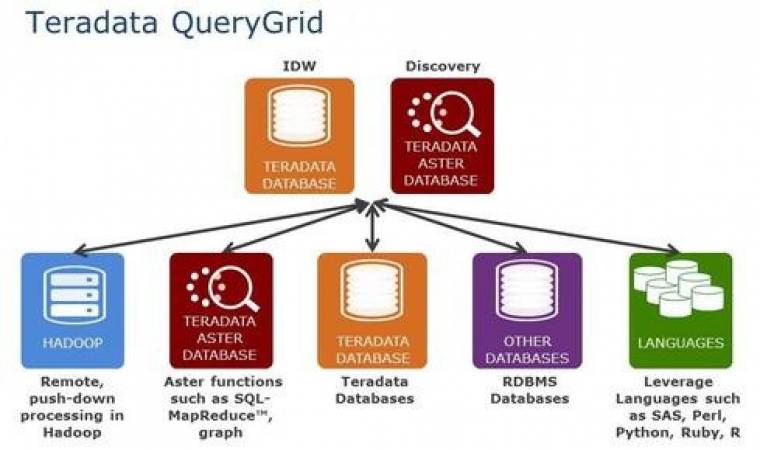Teradata Corp. (NYSE: TDC), the big data analytics and marketing applications company, announced the data fabric enabled by Teradata QueryGrid which turns multiple best-of-breed solutions into an orchestrated analytical ecosystem. The data fabric weaves together multiple analytics, diverse data repositories, and disparate systems to provide business users a cohesive and uninterrupted analytic ecosystem.
Today, companies employ many different technologies for operational and analytical systems, which are sourced from different vendors. Due to the lack of integration, users treat them as separate systems, limiting the company’s ability to get timely answers to their business questions and ultimately affecting their productivity.
Teradata enables a cohesive data fabric spanning the breadth of multiple systems, giving companies the flexibility to pick their file systems, operating systems, data types, analytic engines, and system design characteristics to meet their business needs. Teradata QueryGrid is the software that implements this revolutionary new data fabric concept. It orchestrates query execution across multiple processing engines and repositories in a secure and optimized manner.

"Teradata QueryGrid gives users access to their data in one seamless data fabric," said Scott Gnau, president, Teradata Labs. "The data fabric puts the focus on getting answers to business questions, and not on the underlying IT process or infrastructure. Businesses can now put big data to work, extending access to users throughout their organization."
New Teradata QueryGrid data fabric capabilities fuse multiple systems, making them behave as one:
Teradata Database-to-Teradata Database Capability
Companies can take advantage of the Teradata Workload-Specific Platform Family, blending multiple systems to meet their business needs for performance, availability, and data value, while scaling their analytical ecosystem in an efficient and economical manner. The Teradata systems work together to deliver the highest levels of consistent performance for meeting service level agreements by sending workload controls between systems. Administrators and users gain ease of management with a single view of cross-platform resource utilization through an integrated “Explain” plan and common administration tools. Companies gain the benefits of a Teradata multi-system environment with the ease of use of a single system.
Teradata Database-to-Teradata Aster Database Capability
QueryGrid now seamlessly extends Teradata Database capabilities with Teradata Aster’s built-in advanced functions, such as nPath, Graph, and Sessionize. This effortless integration allows Teradata Database users to invoke Aster functions within their SQL statement. With one command, users can run operations on their data, leveraging more than 100 prebuilt analytic functions.
Adaptive Optimizer Capability
The Teradata Database employs an Adaptive Optimizer that delivers the highest performance queries across multi-system, multi-vendor, and mixed technology ecosystems. This is accomplished by dynamically collecting statistics as query results are returned from remote systems. These results are coupled with incremental query planning to produce the fastest, most efficient query possible even when using data from diverse technologies like the Oracle relational database system, Hadoop, or a NoSQL MongoDB database.
"In the past, users have been unable to get the data they needed, because it has been spread across isolated and disconnected systems," said Richard Winter, CEO, WinterCorp. "Now they will be empowered by a data fabric, which provides users with high-value, self-service analytics for enterprise transformation, even when the data is stored in multiple database platforms or Hadoop clusters."
With updates to QueryGrid and the Teradata Database, the data fabric capabilities will be available starting late in the fourth quarter of 2014.
